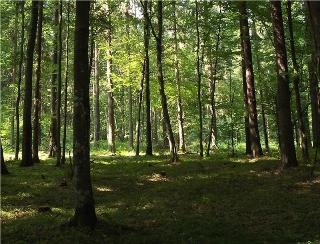Oct 1 2014
Scientists from INRA, in collaboration with WSL (Switzerland) and European colleagues, studied the resistance of forests to drought according to the diversity of tree species.
 Mixed forest /INRA-Charlotte Grossiord
Mixed forest /INRA-Charlotte Grossiord
Due to climate change, parts of the world will face droughts that will affect forest health. Scientists from INRA, in collaboration with WSL (Switzerland) and European colleagues, studied the resistance of forests to drought according to the diversity of tree species. Contrary to what was commonly accepted by scientists, species diversity does not systematically improve tree resistance to drought in forest ecosystems. This result is published in the PNAS on 29 September 2014.
The extreme events induced by climate change will have drastic consequences on forest functions and services and may bring about important drought-induced die-off events. It is, however, known that biodiversity can promote forest ecosystem performance and resistance to insect pests and diseases, but whether or not diverse forests are also better adapted to deal with drought stress remains unknown.
To shed more light on the effects of biodiversity on the resistance of European forests to drought, scientists from INRA, in collaboration with WSL and European colleagues, studied 160 forest stands with a variety of tree diversity levels from monocultures to five species mixtures across Europe (Spain, Italy, Romania, Poland, Germany). “For every region, we compared monocultures to mixed forests (up to 5 tree species) and looked at their respective capacity to resist to drought”, explains Damien Bonal who led the research at INRA.
This study shows that mixed species forests are more resistant to drought stress than monocultures in some regions only: tree diversity may afford resistance to drought stress only in drought-prone areas, i.e. in regions where the frequency and severity of drought during the growing season is high. Therefore, managing forest ecosystems for high tree species diversity alone does not necessarily ensure forest adaptability to possible future severe drought events.
Bonal concludes: “It might be of great importance to consider species identities and local climatic conditions, and not solely the degree of diversity in the mixtures, to obtain complementary use of resources and thus maintain ecosystem functions under drought stress”.
Source: http://www.inra.fr/